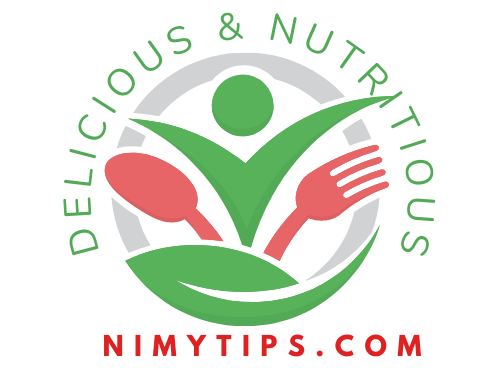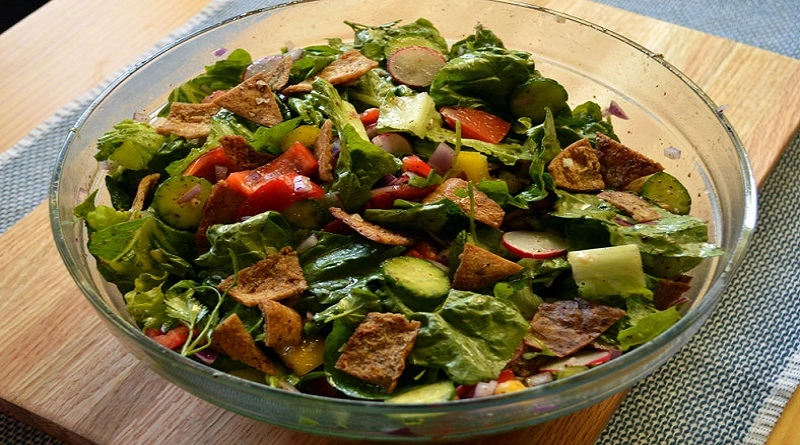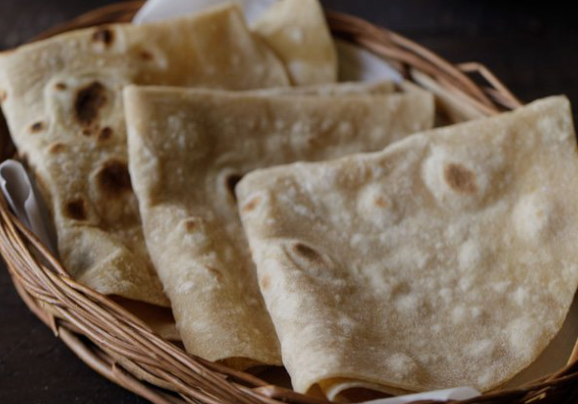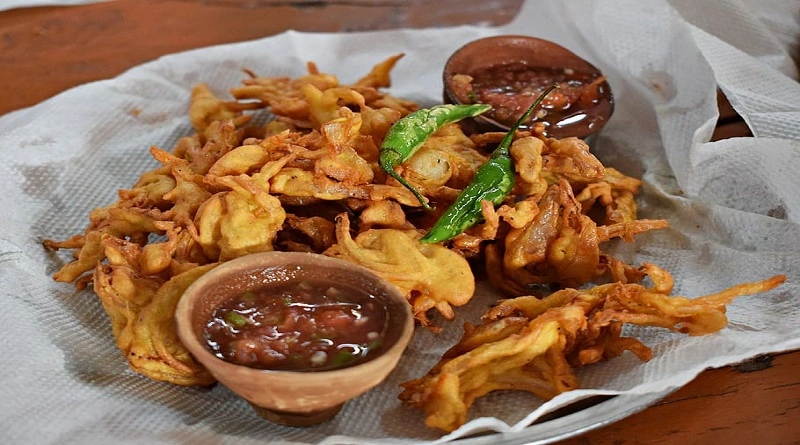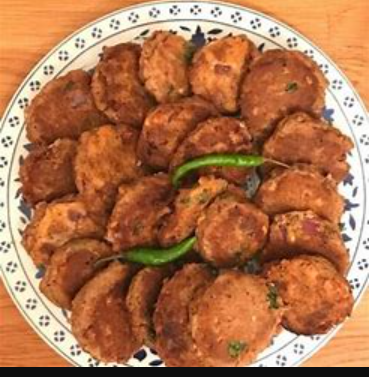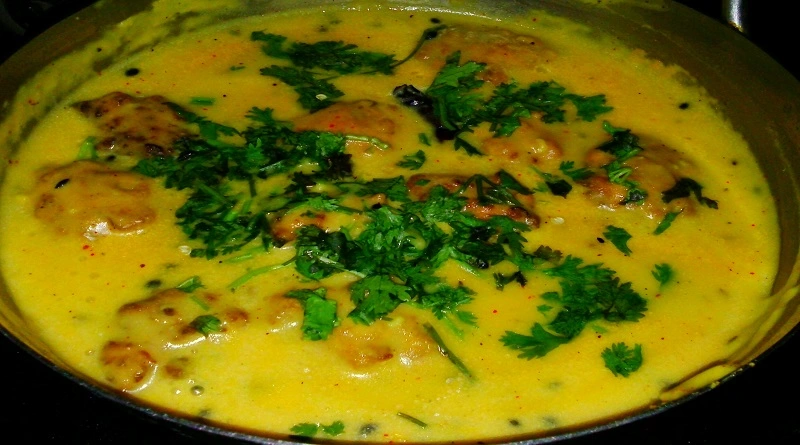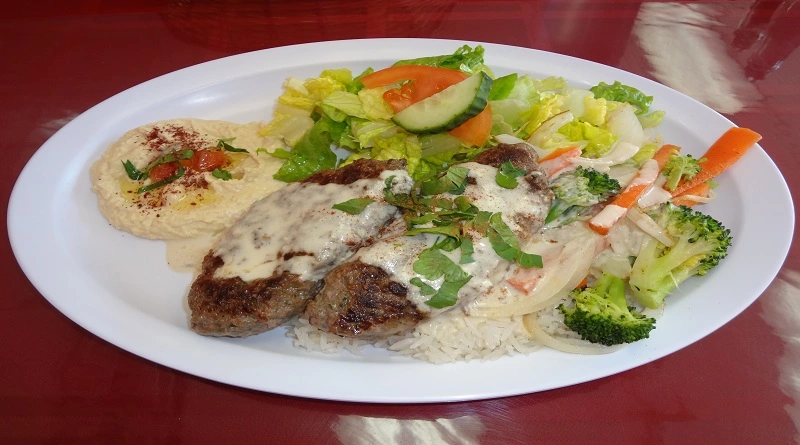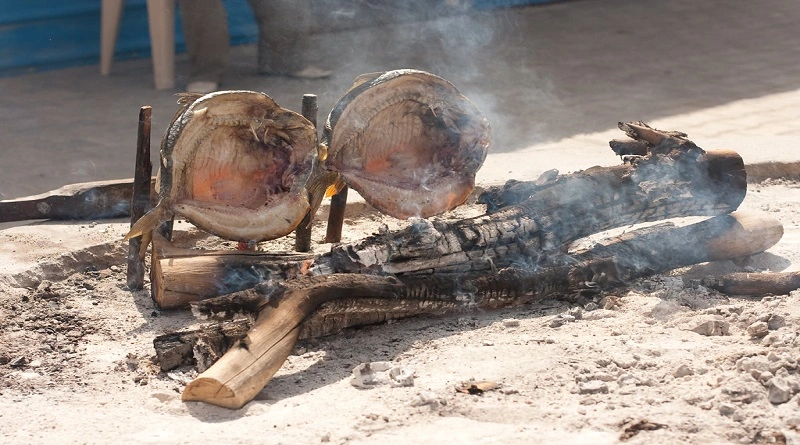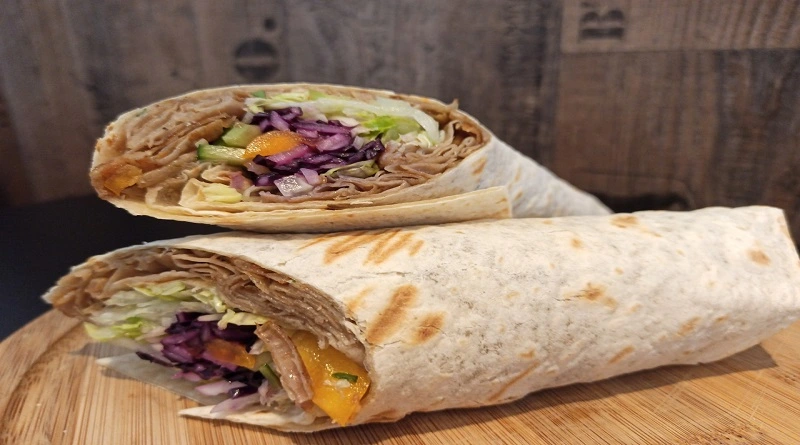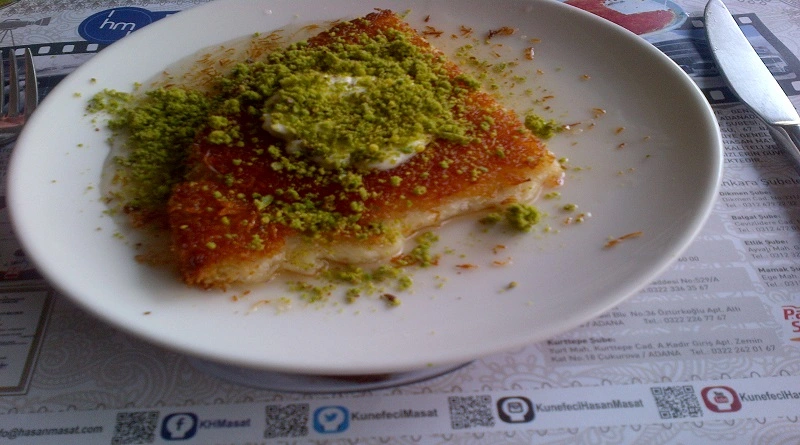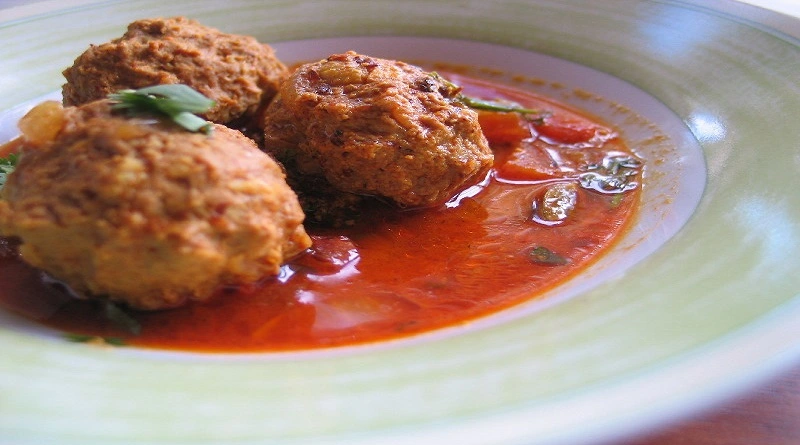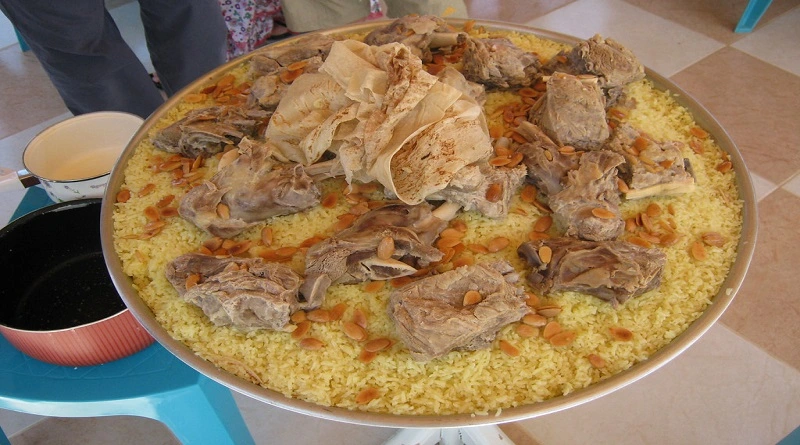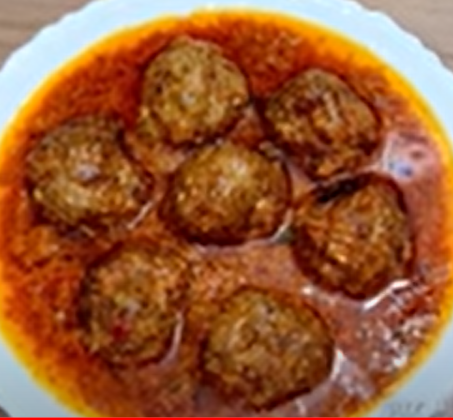Shawarma is a Middle Eastern dish that has become increasingly popular worldwide over the years. Its history can be traced back to the Ottoman Empire, where it was known as döner kebab. The dish consists of meat (usually lamb, chicken, or beef) that is marinated, skewered, and cooked on a spit, which rotates slowly in front of a heat source. The cooked meat is then shaved off in thin slices and served inside a pita or wrap along with various vegetables, sauces, and condiments.
Shawarma has cultural significance in many Middle Eastern and Mediterranean countries, where it is a staple street food and a favorite fast food option. Shawarma has become so popular that it has taken on many different variations and adaptations depending on the region and country.
Overall, shawarma’s rich history and cultural significance have made it a beloved dish worldwide. Its versatility and adaptability have allowed it to become a popular street food option in many different countries and regions, and its unique flavor and convenience have made it a favorite fast food option for many people.
Introduction
Shawarma, a Middle Eastern dish made of meat cooked on a spit and served in a wrap or pita bread with vegetables and sauce, is a popular and nutritious food with worldwide recognition.
In the Levant region (Syria, Lebanon, Jordan, Palestine), shawarma is typically made with marinated chicken or lamb and is served with pickles, tomatoes, lettuce, onions, and a garlic sauce known as toum. Shawarma is also famous in Egypt and it is typically served with tahini sauce and a side of french fries. In Turkey, shawarma is known as döner kebab, and it is typically served with yogurt sauce and tomato sauce.
One of the reasons for shawarma’s popularity is its convenience and affordability. It is a quick and easy meal that can be eaten on the go, and it is often sold at a very reasonable price. In addition, it’s flavorful combination of meat, vegetables, and sauces makes it a tasty and satisfying meal option.
This dish is among the ever liked dishes in the middle east like Baklava, Tabouleh, Knafeh, Falafel, Masgou, Kebab Karz, Mansaf, Kofta, etc
Nutritional Facts
Shawarma is a rich source of protein, with an average serving containing around 30 grams of protein, depending on the meat used. It also contains essential vitamins and minerals, including vitamin B12, iron, zinc, and phosphorus. However, it can be high in calories, depending on the ingredients used to make it.
Health Benefits
Shawarma has several health benefits, including:
High in protein
As mentioned earlier, Shawarma is a rich source of protein, which is essential for building and repairing muscles. Protein also helps to maintain healthy skin, hair, and nails.
Contains essential vitamins and minerals
It contains essential vitamins and minerals, including vitamin B12, iron, zinc, and phosphorus. Vitamin B12 is essential for maintaining healthy nerve and blood cells, while iron helps to transport oxygen in the blood.
Can be a healthy meal option
It can be a healthy meal option if made with lean meat and served with a variety of vegetables. It’s also a great alternative to fast food and processed snacks, which are often high in calories and low in nutrients.
Cooking Recipe
The total cooking time for it depends on the preparation time required to marinate the meat and prepare the vegetables. Generally, it will take around 30 minutes to 1 hour to prepare the ingredients before cooking.
Ingredients required
To make Shawarma, you will need the following ingredients:
- 1 pound of meat (chicken, beef, lamb, or turkey)
- 1 tablespoon of olive oil
- 1 tablespoon of vinegar
- 1 tablespoon of lemon juice
- 1 teaspoon of salt
- 1 teaspoon of black pepper
- 1 teaspoon of cumin
- 1 teaspoon of paprika
- 1 teaspoon of garlic powder
- Pita bread or wrap
- Vegetables (lettuce, tomatoes, onions, etc.)
- Sauce (yogurt sauce, tahini sauce, garlic sauce, etc.)
Utensils required
You will need several utensils. Here are some of the common utensils required for making Shawarma:
- Shawarma machine or rotisserie: A Shawarma machine or rotisserie is the ideal way to cook Shawarma. If you don’t have one, you can still cook it using a grill or oven.
- Knife: You will need a sharp knife to slice the meat into thin strips.
- Cutting board: You will need a cutting board to slice the meat and prepare the vegetables.
- Mixing bowl: You will need a mixing bowl to marinate the meat.
- Tongs: You will need tongs to handle the meat while it’s cooking.
- Skewers: If you’re grilling it, you can use skewers to hold the meat and vegetables.
- Serving plates: You will need plates to serve the cooked Shawarma.
Steps in Cocking Shawarma
Follow these steps to make Shawarma:
- Cut the meat into thin slices and place it in a bowl.
- In a separate bowl, mix the olive oil, vinegar, lemon juice, salt, black pepper, cumin, paprika, and garlic powder to create a marinade.
- Pour the marinade over the meat and mix well, making sure that the meat is evenly coated.
- Cover the bowl with cling wrap and refrigerate for at least 2 hours,
- Preheat your oven to 375°F (190°C).
- Skewer the meat on a spit and place it in the oven.
- Cook the meat for about 30-40 minutes, or until it’s fully cooked.
- Once the meat is cooked, remove it from the oven and let it rest for a few minutes.
- While the meat is resting, heat the pita bread or wrap it in a toaster or oven.
- Assemble the it by placing the cooked meat, vegetables, and sauce inside the pita bread or wrap.
- Roll the pita bread or wrap it tightly, making sure that the filling is secure.
- Serve immediately and enjoy your homemade Shawarma.
Serving Suggestions
Shawarma can be served with a variety of sides, including:
- French fries
- Hummus
- Tabouli salad
- Tzatziki sauce
- Baba ghanoush
Variations of Shawarma
Shawarma can be made with different types of meat and spices, depending on the region and personal preference. Some popular variations includes:
- Chicken Shawarma
- Beef Shawarma
- Lamb Shawarma
- Falafel Shawarma
Tips to make the perfect Shawarma
To make the perfect Shawarma, follow these tips:
- Use lean meat to reduce the calorie content of the dish.
- Marinate the meat for at least 2 hours to enhance the flavor.
- Cook the meat on a spit for an authentic taste.
- Use a variety of vegetables to add color and nutrients to the dish.
- Choose a sauce that complements the flavor of the meat.
Common mistakes to avoid
Avoid these common mistakes while making Shawarma:
- Overcooking or undercooking the meat.
- Using too much or too little seasoning.
- Using a sauce that doesn’t complement the flavor of the meat.
- Overstuffing the pita bread or wrap, which can make it difficult to roll.
Precautions in Cooking
To ensure that your Shawarma is safe to eat, it’s important to take the following precautions:
- Use fresh ingredients: Make sure that the meat, vegetables, and spices you use are fresh and not past their expiration date.
- Cook the meat thoroughly: Ensure that the meat is cooked all the way through and reaches a safe internal temperature of 165°F (74°C).
- Store it properly: If you’re not serving it immediately, store it in the fridge at 40°F (4°C) or below, and consume it within 3-4 days.
- Wash your hands: Wash your hands thoroughly before handling any ingredients or utensils to avoid cross-contamination.
- Use separate cutting boards: Use separate cutting boards for meat and vegetables to avoid cross-contamination.
By taking these precautions, you can ensure that your Shawarma is safe to eat and free from harmful bacteria.
Side Effects
While Shawarma can be a delicious and satisfying meal, it’s important to be aware of any potential side effects. Some possible side effects of consuming Shawarma include:
- Upset stomach: It is often made with spices and sauces that can irritate the stomach and cause digestive issues such as bloating, gas, and diarrhea.
- High-calorie content: It is often high in calories and fat, particularly if it’s made with fatty cuts of meat and served with sauces and dips.
- Food allergies: It can contain common allergens such as gluten, dairy, and nuts, so it’s important to check the ingredients carefully if you have any food allergies.
- Sodium content: It can be high in sodium, particularly if it’s served with salty sauces and pickled vegetables, which can increase the risk of high blood pressure and other health issues.
- Food poisoning: If it is not cooked or stored properly, it can harbor harmful bacteria such as E. coli and Salmonella, which can cause food poisoning and other serious illnesses.
While these side effects are relatively rare, it’s important to be aware of them and take appropriate precautions to minimize the risk. If you experience any symptoms after eating Shawarma, such as stomach pain or nausea, it’s important to seek medical attention.
Conclusion
Shawarma is a delicious Middle Eastern dish that’s packed with protein, vitamins, and minerals. It can be made with different types of meat and spices, and it’s usually served with vegetables and sauce. Follow the recipe and tips in this article to make the perfect Shawarma at home, and enjoy it as part of a healthy and balanced diet.
FAQs
Is Shawarma healthy?
It can be a healthy meal option if made with lean meat, served with a variety of vegetables, and consumed in moderation. However, some Shawarma can be high in calories, sodium, and saturated fat, depending on the ingredients used to make it. Therefore, it’s important to choose your ingredients wisely and enjoy them as part of a balanced diet.
Can Shawarma be made with other types of meat besides chicken and beef?
Yes, it can be made with lamb, turkey, or any other type of meat, depending on personal preference.
Is Shawarma high in calories?
It can be high in calories, depending on the ingredients used to make it. To reduce the calorie content, choose lean meat and avoid using too much sauce.
Can Shawarma be served as a vegetarian option?
Yes, it can be made with falafel, a popular vegetarian option that’s made from chickpeas and spices.
Can Shawarma be frozen?
Yes, it can be frozen for up to 2-3 months. To reheat, simply thaw it and heat it in the oven or microwave.
References
- “The Arabian Nights Cookbook: From Lamb Kebabs to Baba Ghanouj, Delicious Homestyle Arabian Cooking” by Habeeb Salloum.
- “Arabian Delights: Recipes & Princely Entertaining Ideas from the Arabian Peninsula” by Amy Riolo.
- “The Complete Middle Eastern Cookbook” by Tess Mallos.
- “Classic Lebanese Cuisine: 170 Fresh and Healthy Mediterranean Favorites” by Kamal Al-Faqih.
- “The Food of Oman: Recipes and Stories from the Gateway to Arabia” by Felicia Campbell.
- “The Lebanese Kitchen: Quick and Healthy Recipes” by Monique Bassila Zaarour.
- “Persiana: Recipes from the Middle East & Beyond” by Sabrina Ghayour.
- “The Jewelled Kitchen: A Stunning Collection of Lebanese, Moroccan and Persian Recipes” by Bethany Kehdy.
- “Saha: A Chef’s Journey Through Lebanon and Syria” by Greg Malouf.
- “The New Middle Eastern Vegetarian: Modern Recipes from Veggiestan” by Sally Butcher.
- https://en.wikipedia.org/wiki/Shawarma
